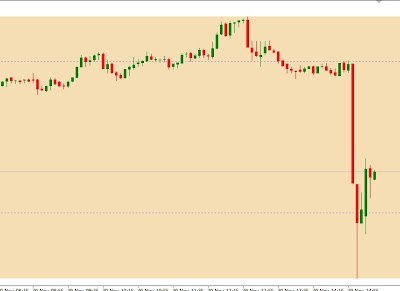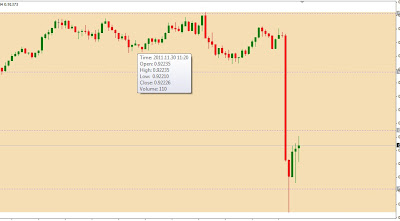




 The U.S. dollar turned sharply lower against its major counterparts on Wednesday, after six major central banks announced coordinated action to improve the ability to provide liquidity to the global financial system.
The U.S. dollar turned sharply lower against its major counterparts on Wednesday, after six major central banks announced coordinated action to improve the ability to provide liquidity to the global financial system. During the European afternoon trade, the dollar was much lower against the euro, with EUR / USD rally 0.93% to reach 1.3438.
In a joint statement, the Federal Reserve, the Bank of Canada, Bank of England, Bank of Japan, the European Central Bank and Swiss National Bank said they had agreed to lower the dollar's exchange rate by 0.5% to prevent the lack of liquidity in the global financial system.
The European Central Bank said the plan aims to reduce the stress of providing credit to households and businesses.
The surprise announcement came after the Bank of China said it plans to cut banks' reserve ratios by 0. 5% in an effort to help boost liquidity and support the second largest economy amid turmoil in global markets.
The dollar was lower against the pound, with GBP / USD advancing 0.51% to 1.5679 hit.
Elsewhere, the dollar weakened against the yen and Swiss franc, with USD / JPY shedding 0.34% to reach 77.63 and USD / CHF falling 0.77% to reach 0.9137.
This morning the Bank of Japan Deputy Governor Kiyohiko Nishimura said the Japanese authorities must take bold action if it moves the currency market are not in line with economic fundamentals.
Further, the dollar was much lower compared to their counterparts in Canada Zealand, Australia and New, with USD / CAD fell 1.14% to hit 1.0203, AUD / USD jumping 2.13% to reach 1.0212 and NZD / USD jumping 1.62% to reach 0.7731.
In New Zealand, official data showed that building consents in New Zealand rose by 11.2% in October, after a decline of 17.2% the previous month.
In addition, a report showed that private capital expenditure rose by Australia more than expected in the third quarter, up by 12.3% after a 6.2% increase the previous quarter.
The dollar index, which tracks the performance of the greenback against a basket of six currencies, fell 0.81%, to 78.49.
Risk appetite was also boosted after a report from ADP payroll processing company in the U.S. employmentsaid the private sector rose by a seasonally adjusted 206,000 in November, blowing past expectations of an increase of 130,000.
Previous month's figure was revised upward to a gain of 130,000 previously reported an increase of 110,000.
The November increase was the largest monthly increase since December last year and almost double the average monthly gain since May, when employment slowed considerably.
Later in the day, the U.S. Published official data on manufacturing activity in the Chicago area and pending home sales, while the euro zone finance ministers were holding a second day of negotiations, after agreeing on measures to extend the bottom of the block rescue on Tuesday.